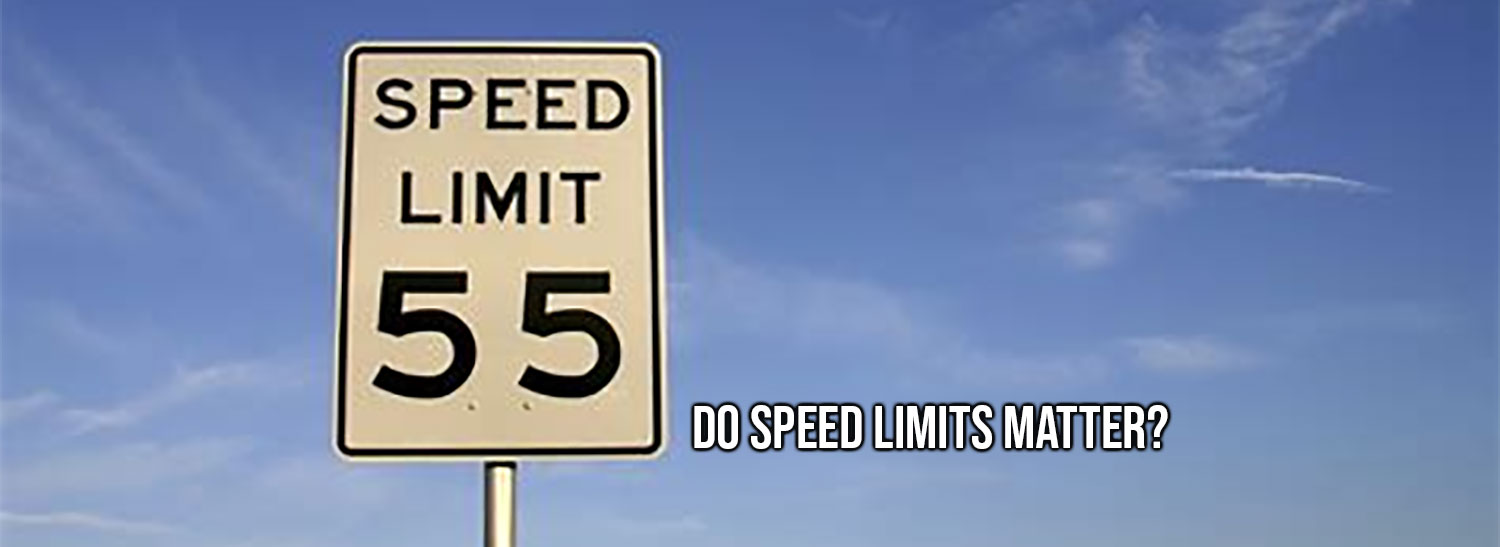
Speed kills. In 2019 9,478 Americans lost their lives from speeding and contributing to more than a quarter of all traffic fatalities that year. In addition, the national highway and traffic safety administration predicts that speed-related crashes cost the US more than 40 billion dollars each year. But the emotional toil for those left behind is immeasurable.
Speed limits were created to help prevent loss of life and property. Yet millions of Americans continue to speed every year. According to the 2020 Traffic Safety Culture Index, nearly half of the drivers surveyed have sped at least 15 mph over the limit on freeways. Their logic is that it is OK to go as much as 10 mph over the speed limit and more if they are careful.
Some experts argue that the problem goes even further and that the current speed limits are too unrealistic to impact how fast people go on the road. Instead, the experts say that it is the shape and flow of the road itself that polices the speed of its drivers.
So, just how effective are speed limits in the US, and do they make our roads safer?
Speed is critical to determine the likelihood of someone surviving being hit by a car. A pedestrian hit by a car going 35 mph is five times more likely to die than someone hit by a car going 20 mph. That statistic jumps to 8 times more likely at 50 mph. The crazy part of all of this is that the typical speed limit on urban arterial roads is between 35 mph and 45 mph. There is a high correlation between how high the speed limits are set and how many fatalities are on that road.
Freeways are not exempt from this logic. For example, just a 5 mph increase on a studied freeway showed an 8.5% increase in fatality rates. In total, during the 25-year study, there were an estimated 13,638 more traffic fatalities than would have been expected if maximum speed limits had not increased.
Today’s state and local governments usually set speed limits based on their own engineering and traffic surveys. They can vary quite a bit from state to state, but most start the process based on the same method called the 85th percentile rule. For example, take a road with no limit, then find the speed that 85% of drivers are driving at or below, and there is your speed limit. An 85th percentile survey usually only takes a couple of days for a state to complete.
Despite being the most standard method utilized by state engineers, most states fail to follow the method exactly and implement speed limits lower than suggested. There is also the problem of conflicting legislation. While they claim to support the 85th percentile rule in Florida, the state legislature has already established maximum speed limits. These politicized lower speed limits make people feel better but have little impact on how fast people drive. Numerous studies show that simply lowering speed limits does not mean that people will drive what the speed limit sign shows.
Before you go blaming your local legislation for weird or out-of-touch speed limits, you need to know that the 85th percentile rule has problems. Namely, if you raise the speed limit to what the 85th suggests, the 15% that usually go above the speed limit typically still go above the speed limit. That causes even deadlier crashes and loss of life.
If research has proven anything, the deadliness of a road has little to do with the speed limit and more to do with how the road is built. These studies show that drivers choose their speed based on how comfortable they feel on the road. Roads should also take into account what is around the road. Urban roads need to consider pedestrian safety and should be built accordingly. A long straight road will naturally have a higher speed than one designed with pedestrian safety in mind—the curvier a road or, the more speed hindrances, the lower the natural speed limit.
The future of traffic safety lies in how much we are willing to prioritize that safety. We will have to set policy that allows physical changes for future roads.




